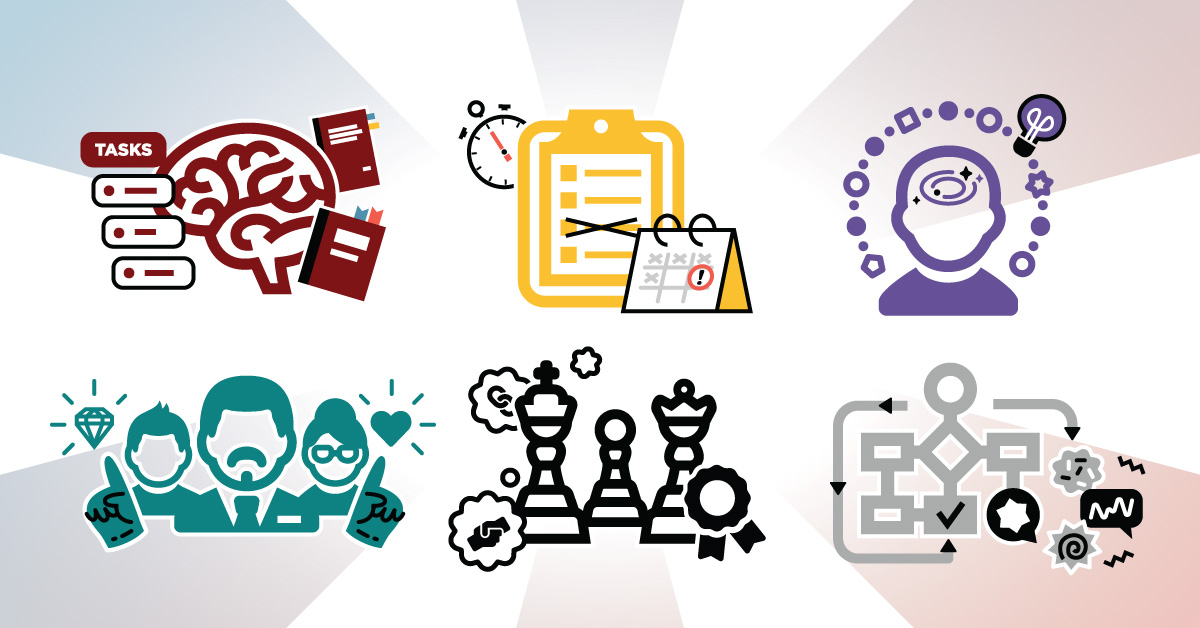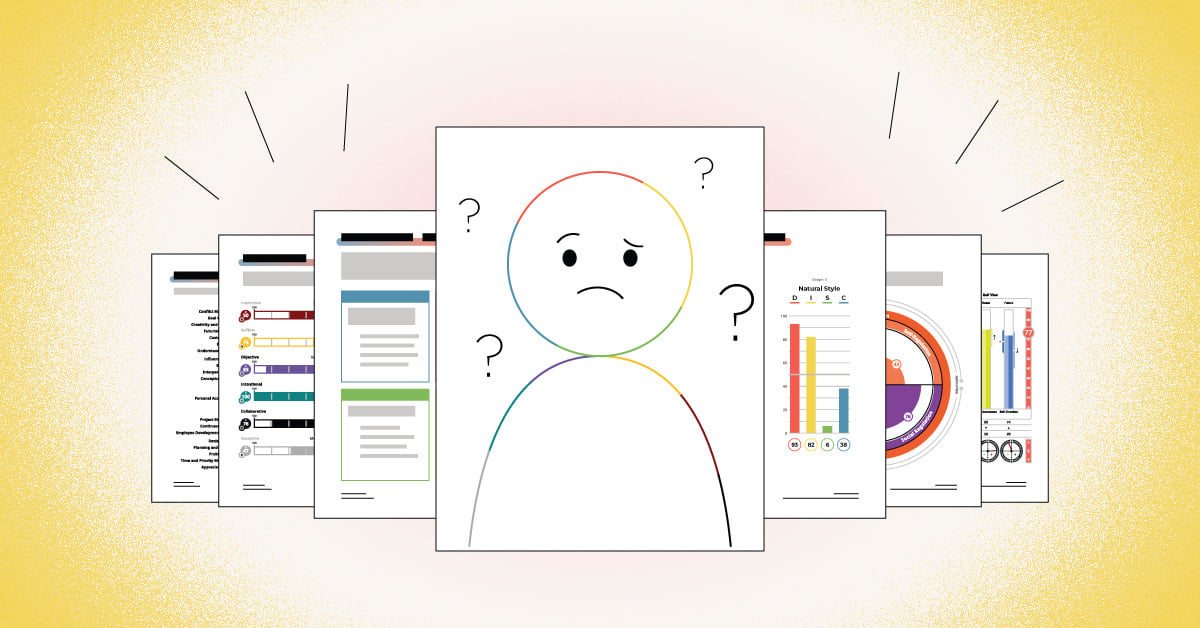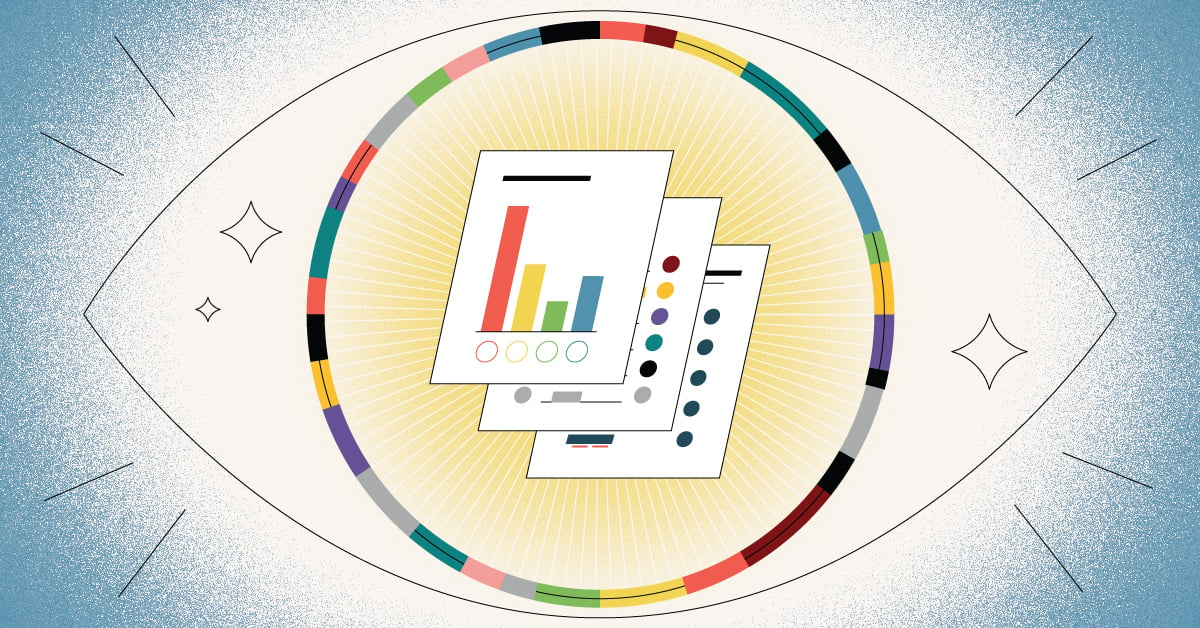
Uncovering motivation in the workplace is something all organizations should strive for. If you truly understand what drives your employees, you can help them engage more fully in their work and make their work environment as positive and productive as it can be.
Do this using The 12 Driving Forces. This assessment measures why a person does what they do. It measures the motivation (and strength) behind behaviors, using 6 different motivators.
Here is how you can harness the power of each of the 12 Driving Forces to engage your employees!
Engaging Both Sides of Knowledge
The focus of the Theoretical motivator continuum is knowledge — specifically how a person values knowledge, learning, and discovery. The two ends of this continuum are Instinctive and Intellectual.
Learn more about Instinctive and Intellectual drivers here.
Instinctive
Your Instinctive team members are driven by their intuition and a preferred fast pace. If they can solve a problem quickly with a minimal amount of information, they will.
Make the day of your Instinctive team member by taking a task off of their plate. They’re likely already ten steps ahead in their own head and planning their next projects. Surprise and delight them by taking on a small task or reallocating a project that you know requires more research than they would prefer— they’ll be pleased!
Intellectual
On the other side of the Knowledge motivator continuum is the Intellectual motivator. People with this motivator want all available knowledge on a subject, simple to understand and regardless of direct application. They are the definition of a continuous learner.
Give them an opportunity to further their education! Ask them to do some research on a program, training, or workshop they think would help in their role, and then send them to it! They will feel invested in and will bring their newfound experience to improve their work in their role.
Engaging Both Sides of Utility
The focus of the Utilitarian motivator continuum is Utility – specifically how a person values practicality, usefulness, and gaining a return on all investments of time, talent, and resources. The two ends of this continuum are Selfless and Resourceful.
Learn more about Selfless and Resourceful drivers here.
Selfless
People with a Selfless motivator are driven by completing tasks for the sake of completion with little expectation of personal return. In the context of this motivator, remember that Selfless here is focusing on utility and tasks, not the everyday use of the word that refers to people.
One of the best ways you can help Selfless people get comfortable in the workplace is to make sure that they have flexible deadlines. Selfless people do need deadlines to keep them on track, but putting them into a ‘crunch time’ mentality will stress them out and cause them to disengage.
If you can find a way to plan ahead and give them a lot of heads up about a deadline and also find a way for it to be flexible, they will do their best work.
Resourceful
The other side of the spectrum is the Resourceful motivator. Resourceful people are driven by practical results, maximized efficiency, and getting a return on their investment.
One way to quickly engage your Resourceful team members is to ask them to help you slash unnecessary aspects of their day-to-day experience. This might sound a little vague, so we’ll explain; there’s a high chance your Resourceful team member has already been mentally cataloging clunky processes and areas wasting time and resources.
Ask them to share these with you and then for a plan of action; they will be thrilled at the chance to ‘clean up’, so to speak, and will streamline within your organization.
Engaging Both Sides of Surroundings
The focus of the Aesthetic motivator continuum is their surroundings, precisely how the beauty and form in their surroundings impact and influence their experience.
The keyword for the Aesthetic is Surroundings and the two ends of this continuum are Harmonious and Objective.
Learn more about Objective and Harmonious drivers here.
Objective
People with an Objective driver are driven by the functionality and objectivity of their surroundings. They are not distracted in environments filled with chaos and have the ability to view everything in pieces and focus on one piece at a time.
One of the best ways to engage Objective people is to give them some chaos to manage. This might sound counterproductive but it’s actually a powerful way to harness their skill set. Objective people are masters of focusing on specific, measurable outcomes, and don’t lose their cool in the chaos of a large-scale objective. Let them create and execute a process— they’ll enjoy the project to chew on.
Harmonious
The Harmonious person has a subjective focus on the experience and the totality of their surroundings – often preferring form over function and seeking to beautify and harmonize the world around them.
Engage them by asking for their input on a creative project! Even if their role isn’t necessarily creative, they still are motivated by a strong sense of aesthetics and harmony. Ask them to rearrange the office to their liking, to create creative content for a new project, or simply lend their eye to a visual task. Harmonious people will then feel valued and engaged in their work.
Engaging Both Sides of Others
The focus of the Social motivator continuum is others – more specifically how a person values giving, being of service, and helping others. The keyword for the Social is Others and the two ends of this continuum are Altruistic and Intentional.
Learn more about Intentional and Altruistic drivers here.
Intentional
People with an Intentional driver are people who are driven to assist others for a specific purpose, not just for the sake of being helpful or supportive.
The best way to get your Intentional team members to engage is to increase accountability at all levels. They want to do their best work for an organization that is doing the same. By stressing transparency at all levels, your Intentional employees will be reassured that everyone is working as hard as they are. Increase reporting and watch engagement increase as a result.
Altruistic
Altruistic people are driven to assist others for the satisfaction of being helpful or supportive. They will give generously of their time, talent, and resources with no expectation of personal return.
Let your Altruistic team members lead for a cause they care about! By engaging their desire to help others and improve the world around them, you’ll show your Altruistic employee that you care about them and what they care about. Obviously, you’ll need to agree on a cause that positively represents your workplace, but your Altruistic team is more than up for that task.
Engaging Both Sides of Power
The focus of the Individualistic motivator continuum is power — specifically how a person values individuality, status, renown, and personal influence. The two ends of this continuum are Collaborative and Commanding.
Learn more about Collaborative and Commanding drivers here.
Collaborative
Collaborative people are driven by being in a supporting role and contributing with little need for individual recognition. They focus on their contribution versus advancing their position and enjoy working behind the scenes and getting things done.
A great way to help Collaborative people engage is to expand your team activities. Collaborative people are often full of great ideas but prefer to take a backseat role while determining paths forward. The more people contributing, the better, so try to encourage diverse groups of people to brainstorm and trade ideas when possible. Push for coffee breaks and working lunches with different members of your team to get new perspectives and help your Collaborative team members open up.
Commanding
Commanding people value status and public recognition and they assert control over their freedom and destiny. They are driven to create winning strategies and are passionate about creating an enduring legacy through their work.
Engage your Commanding team members by acknowledging them publicly. It’s not like they’re asking for a parade or excessive special treatment, but they will engage more with their work if it’s actively contributing to their legacy in the organization. Take time to single them out in a meeting, pass on the praise to an executive level, or take them out to lunch to celebrate a workplace win. They’ll appreciate it!
Engaging Both Sides of Methodologies
The focus of the Traditional motivator continuum is methodologies, which refers to how individuals locate meaningful and defined systems that align with their personal beliefs and values. It addresses how individuals view structures, traditions, and what kind of approaches they prefer to take. The two ends of this continuum are Structured and Receptive.
Learn more about Structure and Receptive drivers here.
Receptive
Receptive people are driven by new ideas, methods, and opportunities that fall outside a defined system for living.
People with a Receptive driver are always looking for new ways to accomplish routine tasks and like to set their own path to guide and direct their actions. One of the ways to connect with them and engage them fully in their roles is to ask them to dream with you. Where do they envision their role growing? How can your team change its processes to be more effective? How can you transform your organization together? Tap into their expansive imagination and try something new together.
Structured
Structured people are driven by traditional approaches, proven methods, and abiding by a defined system for living. They prefer to show their work and want you to do the same.
People with a Structured driver will engage most fully in workplaces that run with a defined system, so try to learn more about their preferences and stick by them. A great way to start this conversation is to ask about their reasoning; what about this system works for them? Why is it so effective? Take that information and then apply it to their different assignments. Structured people will appreciate it.
Appreciating Each Driving Force
By understanding and appreciating your employees for who they are as individuals, you can increase their engagement, productivity, and happiness in their roles. Create your structures and tasks around them and their needs, and you’ll see productivity and happiness increase.
Want to get started using The 12 Driving Forces? TTI Success Insights can help! Contact us here to harness the power of motivation in your organization.



